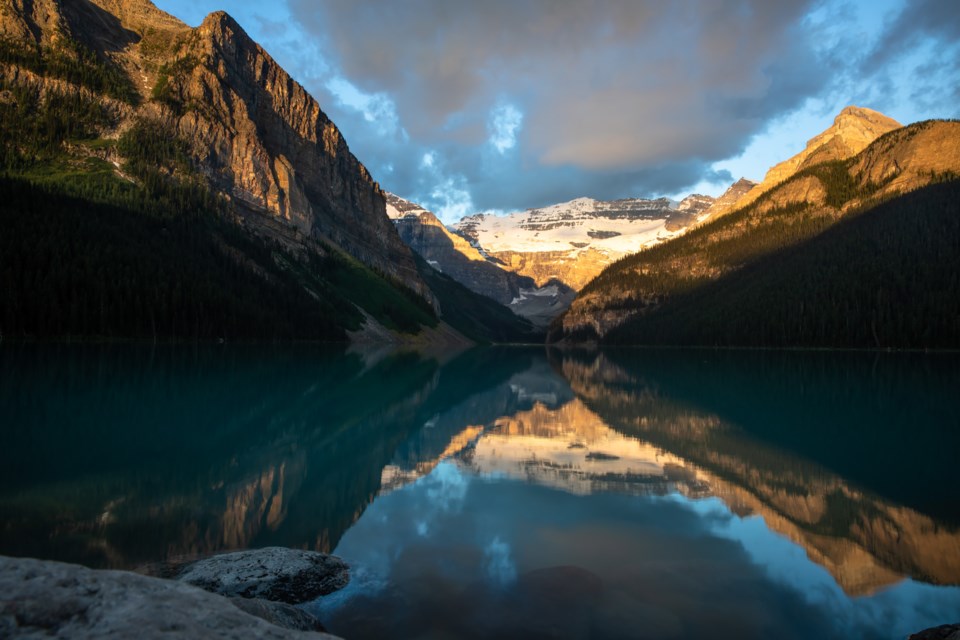BANFF – Local and national conservation organizations are calling on Parks Canada to take a stronger stance on climate change in the new management plan for Banff National Park.
Parks Canada plans to develop a climate change action plan, but Bow Valley Naturalists and Canadian Parks and Wilderness Society (CPAWS) say the climate change and biodiversity crises should frame the entire management plan.
The groups say there should also be a series of specific objectives that tie climate change research, modelling, and management to all aspects of park management, noting these connections in the draft plan, which is out for public review until July 7, are weak.
“One of the areas of the management plan that I am most disappointed in is the climate change and adaptive management strategy,” said Sarah Elmeligi, Canmore-based national parks coordinator for CPAWS.
“I am disappointed because I don’t think it goes far enough to effectively position Parks Canada as a leader in addressing climate change across a large landscape.”
The conservation groups point to the fact Parks Canada manages some of the largest extents of roadless habitat with glaciers in North America, which hold great capacity for fighting against climate change.
Specifically, CPAWS argues Parks should be following the lead of the federal government to aim to transition to carbon-neutral by 2035 with targets to move in that direction included in the management plan.
In addition, the national conservation group says the federal agency should model and identify habitat refugia for wildlife, and then manage these areas to ensure low levels of human use and prioritize ecological process.
“This will ensure that as species’ ranges shift due to climate change, habitat are available for them,” Elmeligi said.
The draft management plan states it is clear the future cumulative impacts of climate change on the park’s natural and cultural resources could be substantial and affect all aspects of park management.
In particular, water will become an increasingly precious resource, and its careful management is integral to ecological integrity, park townsites and visitors, and to downstream communities.
The draft plan states the goal of the climate action strategy to be developed is to integrate climate change thinking and action into existing Parks Canada management approaches and operations, including transportation systems.
The document calls for increased capacity within Parks to identify, predict and respond to local and regional climate-related impacts as well as monitoring changes in temperature, precipitation-snowpack, river flow regimes and alpine habitat.
As part of its strategy, Parks Canada plans to support or collaborate on research relating to climate change impacts on natural or cultural resources or visitation in alpine environments.
It will also include completing risk assessments on core components of the park’s resources, assets, operations and services that may be affected by climate change and extreme weather events.
Parks Canada officials say a climate change action strategy is one of the more detailed plans that will come out of the management plan.
They say given that climate change is an evolving and complex challenge, the plan would be reviewed and updated every five years or more frequently if required.
“A climate action plan is going to take a lot of hard work and detailed thinking,” said Sheila Luey, Parks Canada’s point person on the management plan.
“It is going to be something that we will need to do further work on and further engagement of the public and stakeholders on.”
While the draft management plan acknowledges potential climate change impact on alpine species, the Bow Valley Naturalists say it fails to clearly articulate the importance of the need for conservative management decision-making in alpine areas.
Reg Bunyan, BVN’s vice-president, said a number of different agencies have undertaken climate change modelling for mountainous areas and they all consistently point to the negative potential impact on the inhabitants of high elevation areas.
“These alpine areas may also become increasingly important refugia for heat-intolerant species that currently live at lower elevations,” he said.
Compounding the potential climate impacts is the trend in visitation patterns, which Bunyan said is leading to significantly more visitation pressure in alpine areas.
“The draft plan identifies the need for more monitoring and research, but statements such as this always leave us feeling uncomfortable,” he said. “Parks Canada has a long and unfortunate history of preferring to undertake extensive monitoring rather than acting on the available evidence.”
BVN argues modelling impacts on high elevation species can provide a scientific basis for making conservative management decisions now.
“The risk of waiting until monitoring and research shows conclusive evidence may well come too late to reverse pending management decisions on summer use at ski areas, new trail construction or new activities,” Bunyan said.
In addition, Bunyan said the strategy is weak on how park businesses and visitors will fit into any future greenhouse gas emissions (GHG) reduction strategy.
He said the draft management plan describes a number of steps that Parks Canada will take to reduce GHG emissions, but relative to business and visitors the federal agency itself is likely a fairly small proportion of park-generated GHG emissions.
“As identified in the draft management plan, encouraging businesses – or visitors for that matter – to reduce GHG emissions is frankly, meaningless,” he said.
“What is needed is a carrot and stick approach, rewards for good practices and penalties for poor practices, ideally embedded in a regulatory framework. Otherwise, like global warming, it's just more hot air.”




